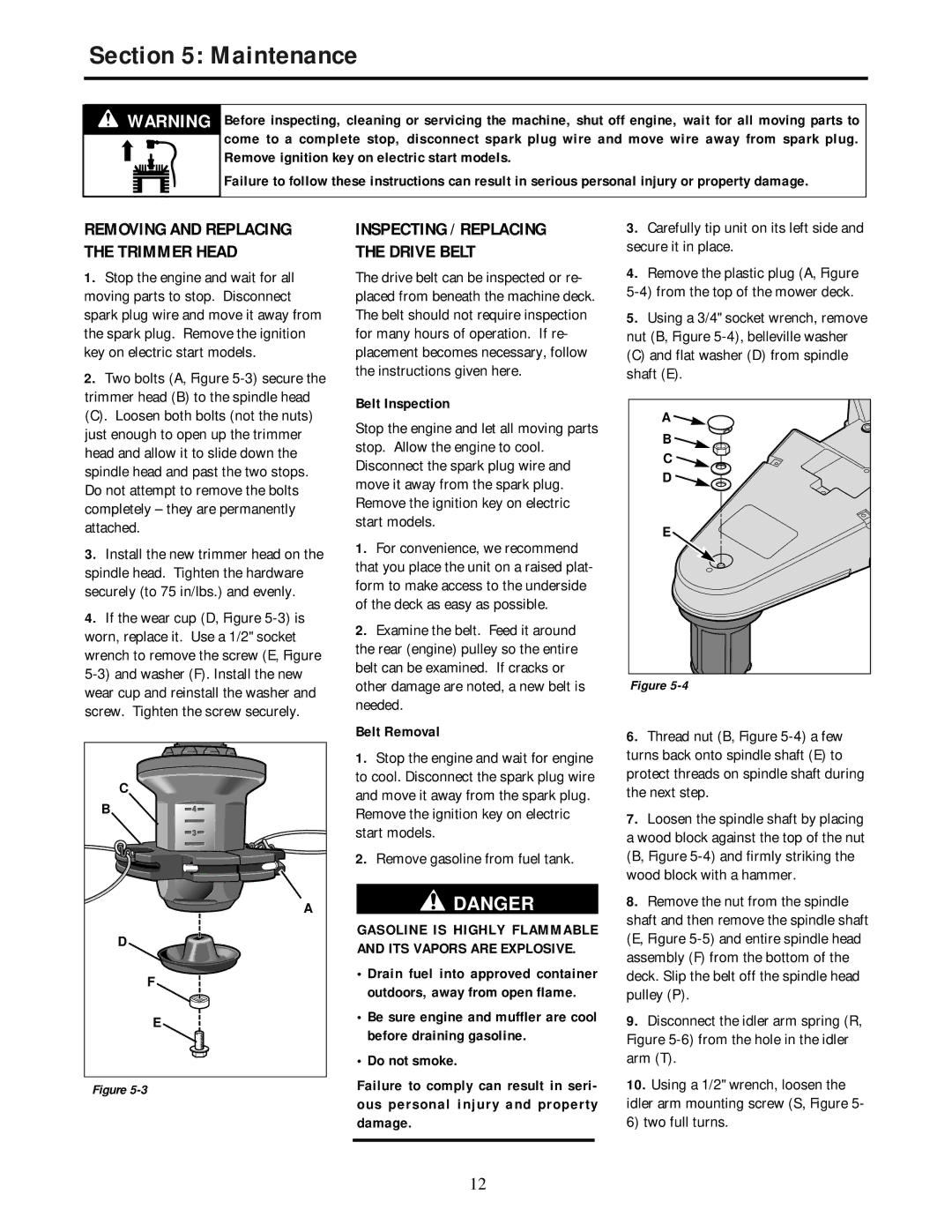52058, 52057 specifications
The Troy-Bilt 52058 and 52057 are two impressive models in the Troy-Bilt lineup, known for their power, durability, and ease of use, making them popular choices for homeowners and garden enthusiasts alike.The Troy-Bilt 52058 boasts a robust 306 cc OHV engine, providing the necessary power to tackle even the toughest of garden tasks. This model features a 24-inch cutting width, allowing it to cover large areas quickly. The Rear Tine Tiller design further enhances its capability, as it digs deep into the soil with its heavy-duty tines, ensuring that your garden bed can be prepared with minimal effort. One of the standout features is its patented forward and reverse tilling capability, which improves maneuverability and efficiency.
On the other hand, the Troy-Bilt 52057 comes with a slightly smaller 250 cc engine but remains powerful in its own right. It also incorporates a 16-inch tilling width, making it suitable for smaller gardens or tighter spaces. This model is engineered with a gear-driven transmission, providing superior handling and control while tilling. The adjustable tilling depth feature allows users to customize their tilling experience, whether they're breaking new ground or maintaining existing beds.
Both models are equipped with an ergonomic handle design, ensuring that users remain comfortable during prolonged use. The intuitive controls are easily accessible, allowing for smooth operation even for those who may not have extensive experience with gardening equipment. Additionally, Troy-Bilt has included a sturdy rear-wheel design in both models, which ensures stability and ease of movement across various terrains.
In terms of technology, these tillers are equipped with advanced features that maximize efficiency. The performance-enhancing tilling tines are designed to break up soil efficiently, reducing the time and effort needed for garden preparation. Furthermore, these models comply with modern emissions regulations, making them environmentally friendly choices for today’s gardeners.
Overall, the Troy-Bilt 52058 and 52057 represent a perfect blend of power, versatility, and user-friendly design. Whether you are preparing soil for planting or maintaining existing flower beds, these tillers offer the dependability and performance needed to achieve gardening success. With their strong build quality and thoughtful engineering, they are excellent investments for anyone serious about gardening.

